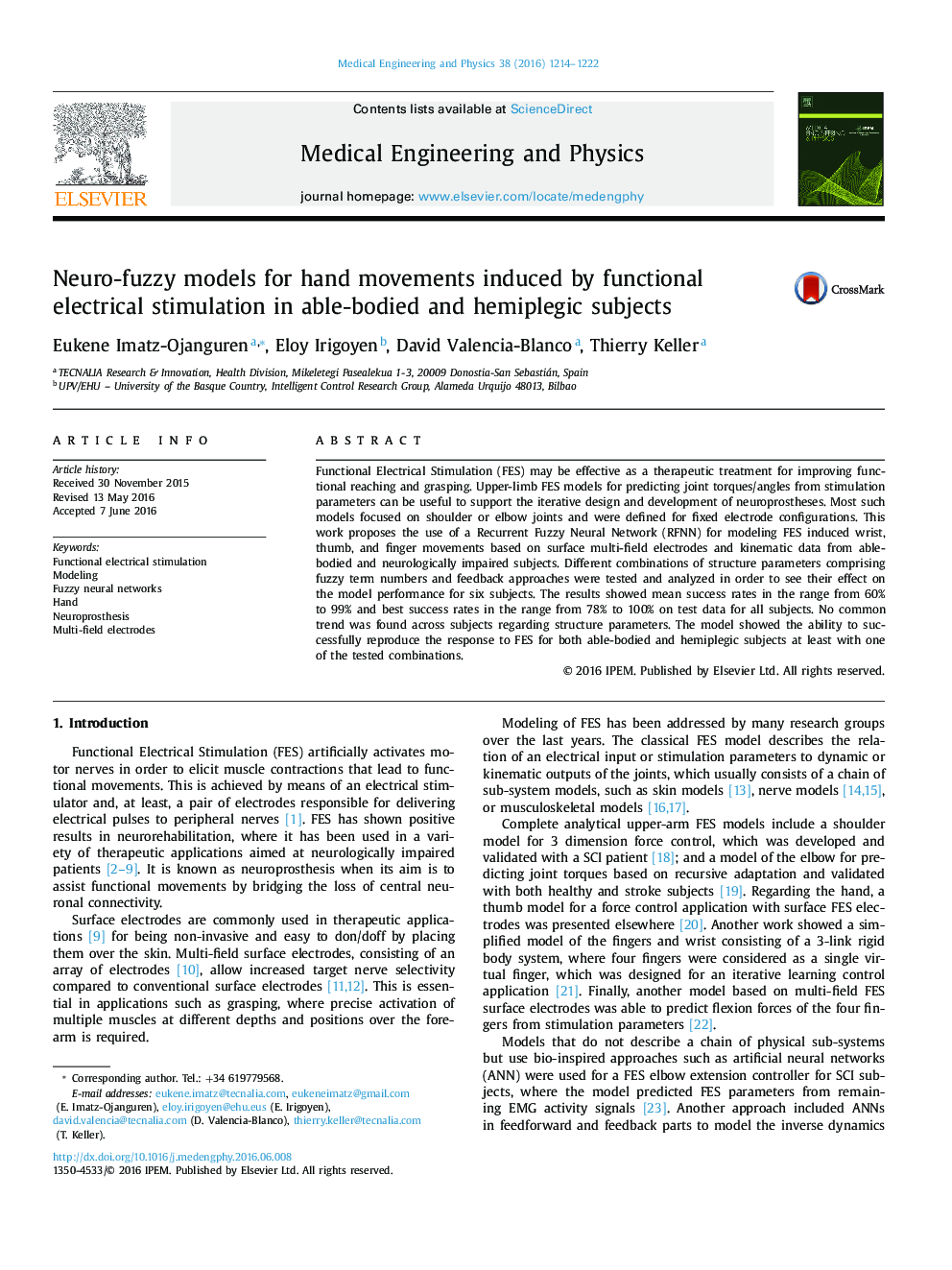| Article ID | Journal | Published Year | Pages | File Type |
|---|---|---|---|---|
| 5032838 | Medical Engineering & Physics | 2016 | 9 Pages |
â¢An upper-limb FES model based on recurrent fuzzy neural networks is proposed.â¢Model predicts wrist and finger kinematics from electrode location and amplitude.â¢Data collected from healthy subjects and brain injured hemiplegic patients were used.â¢Prediction success rates between 78% and 100% were achieved by all subjects.
Functional Electrical Stimulation (FES) may be effective as a therapeutic treatment for improving functional reaching and grasping. Upper-limb FES models for predicting joint torques/angles from stimulation parameters can be useful to support the iterative design and development of neuroprostheses. Most such models focused on shoulder or elbow joints and were defined for fixed electrode configurations. This work proposes the use of a Recurrent Fuzzy Neural Network (RFNN) for modeling FES induced wrist, thumb, and finger movements based on surface multi-field electrodes and kinematic data from able-bodied and neurologically impaired subjects. Different combinations of structure parameters comprising fuzzy term numbers and feedback approaches were tested and analyzed in order to see their effect on the model performance for six subjects. The results showed mean success rates in the range from 60% to 99% and best success rates in the range from 78% to 100% on test data for all subjects. No common trend was found across subjects regarding structure parameters. The model showed the ability to successfully reproduce the response to FES for both able-bodied and hemiplegic subjects at least with one of the tested combinations.
